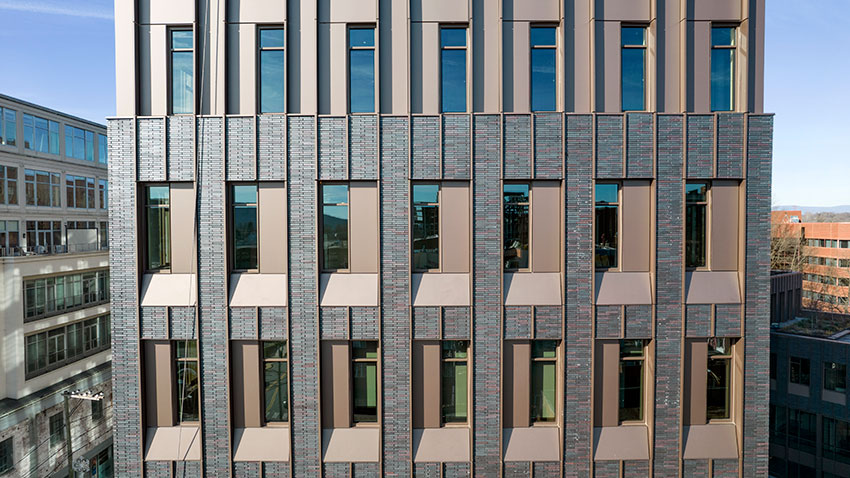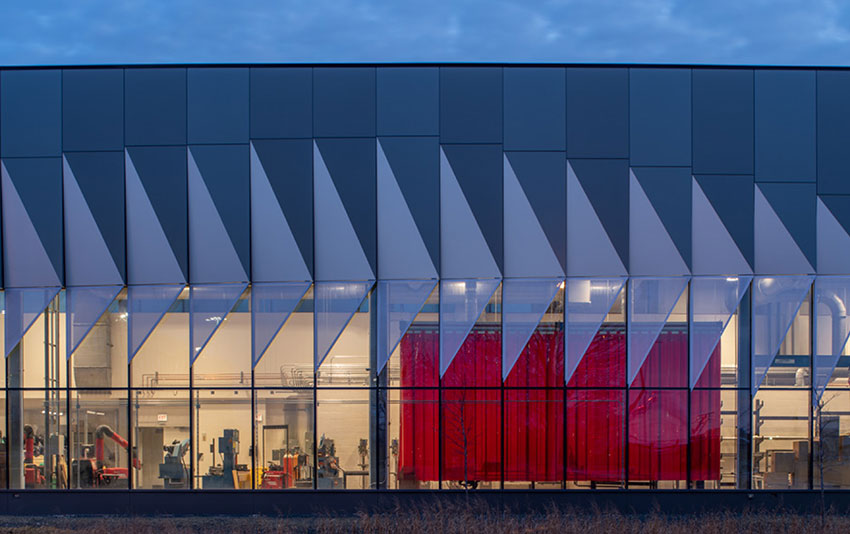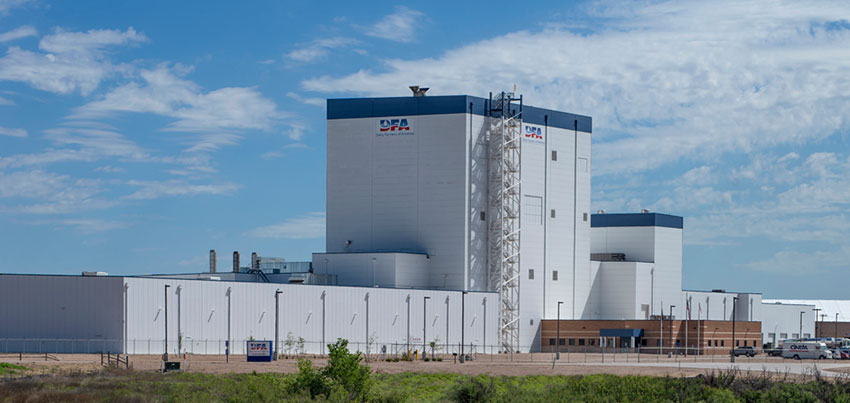Designing Outside the Box
 1 AIA LU/HSW; 1 IDCEC CEU/HSW; 1 GBCI CE Hour; 0.1 ICC CEU; 1 IIBEC CEH; 0.1 IACET CEU*; 1 AIBD P-CE; AAA 1 Structured Learning Hour; This course can be self-reported to the AANB, as per their CE Guidelines; AAPEI 1 Structured Learning Hour; This course can be self-reported to the AIBC, as per their CE Guidelines.; MAA 1 Structured Learning Hour; This course can be self-reported to the NLAA.; This course can be self-reported to the NSAA; NWTAA 1 Structured Learning Hour; OAA 1 Learning Hour; SAA 1 Hour of Core Learning
1 AIA LU/HSW; 1 IDCEC CEU/HSW; 1 GBCI CE Hour; 0.1 ICC CEU; 1 IIBEC CEH; 0.1 IACET CEU*; 1 AIBD P-CE; AAA 1 Structured Learning Hour; This course can be self-reported to the AANB, as per their CE Guidelines; AAPEI 1 Structured Learning Hour; This course can be self-reported to the AIBC, as per their CE Guidelines.; MAA 1 Structured Learning Hour; This course can be self-reported to the NLAA.; This course can be self-reported to the NSAA; NWTAA 1 Structured Learning Hour; OAA 1 Learning Hour; SAA 1 Hour of Core Learning
Learning Objectives:
- Define embodied carbon and its effects in the built world.
- Using a matrix of environmental impacts, make sustainable material selections from both traditional and alternative building products.
- Delineate between sustainable certifications, including LEED, LBC, and WELL, to secure a best fit for project goals and outcomes.
- Define material health and transparency, LCAs, and EPDs, in order generate a responsive and sustainable material selection framework.
- Evaluate materials by quantifying embodied carbon impacts through LCA tools such as EC3.
This course is part of the Metal Architecture Academy
An Environmental Product Declaration (EPD) is a comprehensive, internationally harmonized report that documents the ways in which a product, throughout its life cycle, affects the environment. An EPD tells the life-cycle story of a product in a single, written report, focusing on information about a product’s environmental impacts, such as global warming potential (GWP), smog creation, ozone depletion potential (ODP), use of limited resources, and water pollution. An EPD also can include other product impacts such as land use changes, potential toxicity risks, as well as voluntary environmental initiatives that are of particular interest to the discloser. A Type III Environmental Product Declaration is an EPD which adheres to specific format and impact reporting requirements set forth by an accredited standard and has been peer-reviewed.
EPDs do not rank products, and the existence of an EPD for a product does not indicate that environmental performance criteria have been met. EPDs are rather a disclosure tool that helps purchasers and design professionals to better understand a product’s sustainable qualities and environmental repercussions so that they can make more informed product selections. EPDs for most construction products will eventually be needed to demonstrate compliance.
Buy Clean initiatives, at both the state and federal level, are also becoming stronger drivers for products with lower embodied carbon emissions options and for EPDs in general. The Buy Clean California Act, enacted in October 2017, established embodied GHG emissions thresholds for select materials used in public buildings. The Buy Clean Colorado Act (July 2021), required EPDs beginning in July 2022. Other states considering Buy Clean legislation include Washington, Oregon, Texas, Minnesota, New York, and New Jersey. At the federal level, a Buy Clean Task Force is working toward the goal of a comprehensive federal Buy Clean program.
Under the Lens: Traditional and Alternative Building Products
The transition to a net-zero economy will be metal intensive.2 Steel is the only material critical to all low carbon technologies, including geothermal, hydro, nuclear, bio energy, electricity networks, and electric vehicles, making it essential to the U.S. decarbonization strategy, national and economic security, and critical infrastructure.
Photo courtesy of Kingspan Insulated Panels
With many green advantages over other materials, metal can reduce energy consumption, improve air quality and thermal comfort, help comply with energy codes, minimize environmental impacts, and get recycled indefinitely. The CODE Building, Charlottesville, Va.
Selecting to avoid embodied carbon means adhering to the principles of reuse, reduce, and sequester. While certain natural materials, like wood, may appear to have a more favorable CO2e profile, this can be misleading as all impacts, not just GWP, should be considered in responsible material selection. It is also important to consider the effect of service life on this analysis. A structure which lasts half as long as another actually should be considered as having twice the impact for comparison purposes. With many green advantages over other materials, metal can reduce energy consumption, improve air quality and thermal comfort, help comply with energy codes, minimize environmental impacts, and get recycled indefinitely. A key step to avoiding embodied carbon is reuse. Metal is the only known construction material that can be recycled indefinitely with little impact on material properties. This allows it to be repurposed in the same exact form, a process called closed-loop recycling. Not only are excess and scrap metals such as steel and aluminum readily and easily recyclable, it remains financially viable to do so. This ensures the envisioned impact reduction will actually happen, instead of only existing “on paper.” Sixty to 80 million tons of steel scrap is recycled each year into new steel products in the U.S. alone. This impacts the cradle to cradle profile of steel. First introduced in 2002 by architect William McDonough and chemist Michael Braungart, cradle to cradle refers to design standards for creating products that model a view of natural materials as nutrients, circulating in healthy, safe metabolisms. McDonough and Braungart present an integration of design and science in Cradle to Cradle: Remaking the Way We Make Things that provides enduring benefits for society from safe materials, water, and energy in circular economies and eliminates the concept of waste. Metal meets these requirements.
Shop-fabricated metal components reduce onsite labor, cycle time, and construction waste. A 2,000-square-foot residence framed in steel produces less than 2 percent leftover material, all of which can be recycled, compared to wood framing, which yields an estimated 20 percent waste going to a landfill. Metal cladding components are factory coated with a 20-40 year warranted life and any volatile compounds (VOCs) are controlled at the factory, not released at the jobsite. Daylighting and exterior views can also be easily incorporated into a metal building design to earn LEED credits using composite materials. Metal buildings offer effective insulation, reduced air leakage, and readily accept high-performance windows and doors. A metal roof can also be the ideal base to support solar panels. All of these factors can be used to earn LEED points.
Insulated metal panels (IMPs) are a type of “perfect wall,” due to the location of their control layers. Water, air, and vapor control layers are all located on the exterior of the structure, with thermal control located outboard of the other control layers. IMPs provide all four control layers within a single component, meaning they do not require the use of supplemental air/water/vapor or thermal control layers. Depending on climate zone and special requirements, IMPs can be used with supplemental cavity insulation subject to ratios listed in the International Building Code. Because of this construction, IMPs can be used in all climate zones: cold, mixed, hot, humid, dry, or marine. IMPs also work for the demands of all interior environments: office, commercial, residential, institutional, pools, museums, art galleries, and data processing centers.

Photo courtesy of Tom Rossiter; courtesy of CENTRIA
IMPs are available in a wide variety of colors, widths, profiles, and finishes, enabling the realization of virtually any desired aesthetic for walls and roofs. Richard J. Daley College, Chicago.
IMPs can be used as a barrier wall system and can be integrated with other wall and roof systems while still maintaining proper control layer continuity.
The American steel industry leads the world in low embodied carbon emissions steel production. The industry continues to reduce its carbon profile in response to numerous drivers. Producing a ton of steel today in North America requires less than half the energy that was needed to produce a ton of steel 40 years ago, resulting in a 50 percent reduction in greenhouse gas (GHG) emissions. American steel production is the cleanest of the major steel-producing countries, with a cleaner electricity grid production than other regions. U.S. manufacturers have a significantly greater use of natural gas versus coal as an energy source and a larger share of electric arc furnaces (EAF). Integrated mills primarily use pelletized iron, not the lower quality sintered iron used in China and elsewhere. Purchasing U.S.-based steel has a much lower environmental impact from transportation than steel produced in other countries, an important factor when comparing the impact of steel in a project. It also supports nearly two million American jobs in a time when manufacturing jobs are leaving the U.S. at an alarming rate.
As an advanced engineered material, steel is the material of choice by engineers and architects because of its strong performance characteristics, durability, reliability, versatility in design and consistency as a product. The use of pioneering new production methods that include manufacturing steel from green hydrogen have helped to further reduce embodied carbon content of certain insulated metal panel products by up to 25 percent. Steel lasts longer, requires less maintenance, and is completely recyclable, unlike many other construction products. Steel also sidesteps the waste associated with other types of construction, including wood construction, because it is cut to order.
When decision making to avoid embodied carbon and secure environmental benefits, look for products that are supported with LCA documentation. Coupled with clear simple material ingredient reporting in the form of HPDs and Declare labels, EPDs and other LCA disclosures help in meeting LEED, WELL, and additional guidelines on many levels.












